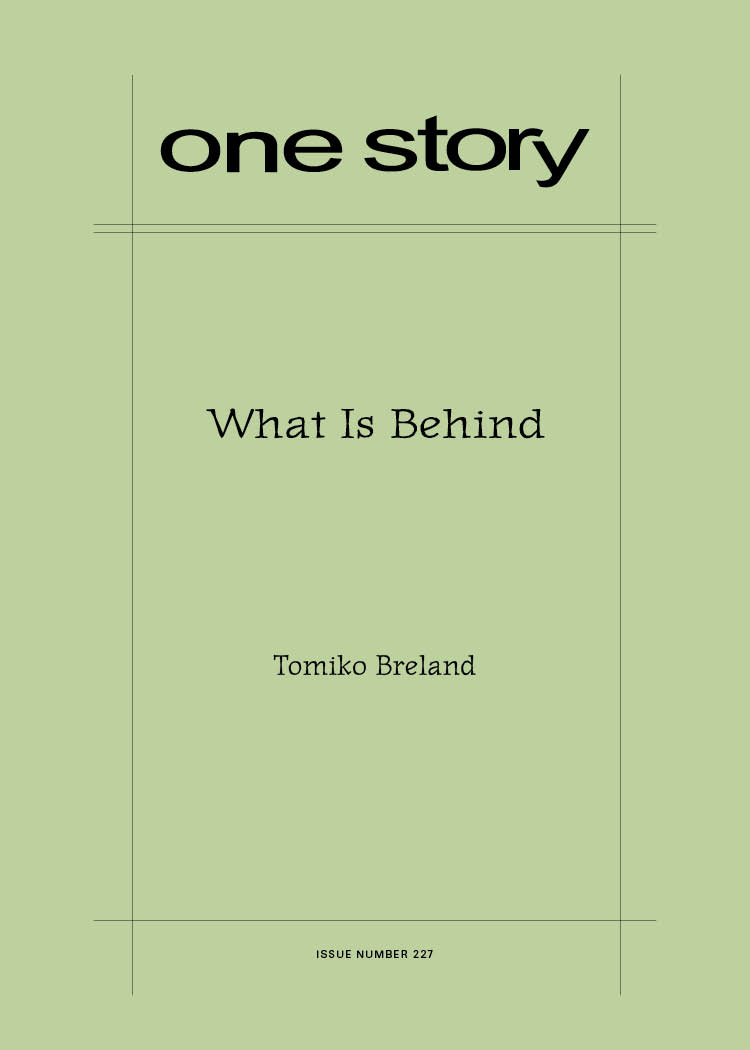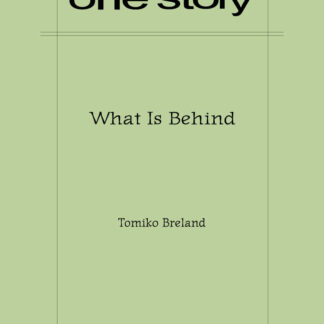
What Is Behind
$2.50
130 in stock
Excerpt
Elias
It is just a field. About half the size of a football pitch. Victor used to watch matches on television, when we had electricity, but I never was much for sports. In any other context, it would be a nice field for a picnic or a kids’ game of football, if the grass weren’t waist high. Out of context, the field would be peaceful. Peaceable. At peace. Even now, I can’t stop myself from that stupid tic—rephrasing things, turning the same words over in my head different ways.
“Go.”
Ammar says it. I am tumbling through the door ahead of him, clumsily, like an ox, even though we’ve rehearsed this for weeks, streaming deftly out the back door of Rima’s house because it is just beyond the road from the field we must cross. I stumble, even though every step and every second matters.
I do not look to my left and right; I know that Victor, Fathi, and Lili are in the shadows of the alley beside the house, and Yana and Mohammed are in a doorway a few houses down. Ammar and Rima are behind me, and Johnny is alone, crouching behind the rusty remains of a car. I know all this without looking, I know that they were waiting for me and have followed my lead, and are sprinting, everyone spread out like a frantic spray of water, into the darkness that should be cover but is never dark enough, that is only exposure and vulnerability and probably death.
Tomiko Breland
Tomiko Breland was born and raised in Monterey, California, and lives there now after a decade in the DC area. She received her BA in English from Stanford University and her MA in fiction writing from The Johns Hopkins University. Tomiko won the Ploughshares Emerging Writer’s Contest in 2014, and her work was selected for inclusion in the 2015 Best American Mystery Stories. She is currently working on her first novel. When Tomiko is not writing, she’s a freelance editor and graphic designer. You can find her on Twitter @tomikobreland.
Patrick Ryan on “What Is Behind”
We at One Story aren’t in the habit of publishing stories that directly relate to current events—not because that’s our policy, but because such stories usually take a long time to dream up, percolate, and write. When Tomiko Breland’s “What Is Behind” came to us, we were captivated by the writing, first and foremost, and we were blown away by its immediate grasp of an ongoing, tragic, and very widespread current event: the plight of the Syrian refugees. The story follows nine people, inviting the reader into each of their heads as they emerge from hiding and make a run for safety. It’s a remarkable piece of political fiction—in no small part because its emotional impact is not just the result of the subject matter, but of the way it’s rendered. To read more about how the story came into existence, take a look at our Q&A with Tomiko Breland, where she reveals why the form she wrote in was the only one that allowed her to do justice to her characters.
Q&A by Patrick Ryan
- PR: Where did the idea for this story come from?
- TB: With a lot of my stories, I come up with the structure before the content. I had this idea that I wanted to tell a story in which the sequential narration leapt from character to character, and in which the transitions were rather dramatic: a narrative relay of sorts. This format necessarily informed the content of the story. There had been a smattering of articles online and on my social media about the Syrian refugee crisis—this was at least a year before the present executive orders on immigration—and the topic seemed to be under-covered and, for me, important. The more reports, articles, and first-person accounts I read about the Syrian crisis, the more this story came together.
- PR: You write from the point of view of nine different characters. Did you ever consider writing about more than nine? Or fewer?
- TB: Honestly, I didn’t set out with a specific number of characters in mind. I had a fairly clear idea of a few individual stories I wanted to tell; I wrote them as they came to me, and I ended up with nine characters. I will admit that I considered reducing the number when I realized how difficult it would be to individualize nine voices, but that’s part of the pain and joy of writing—and I especially enjoy those kinds of challenges.
- PR: You render each of these characters in the first-person. Reading this story is a startlingly intimate experience. Were there early drafts where you were writing in the third-person instead of first?
- TB: Never. The format I’d decided on dictated the point of view. The reader needed to be inside the characters’ heads, in the moment. Also, from the beginning it was important to me that the story not just be about escape and survival, but about connectedness and family. Part of that theme is conveyed—I hope—when the narration switches among characters: just because one person stops telling his or her story, it doesn’t mean the story ends.
- PR: Tell us a little about the timestamps that run down the left-hand side of the page. We’ve never published a story that does that before. Early in our editorial process, I asked if you would consider taking the timestamps out, and you (wisely) made a good case for keeping them. Can you share your reasoning with us here?
- TB: My first draft of this story didn’t use the timestamps, but I wanted the reader to have a sense of the passage of time while the story is happening. The action is somewhat chaotic, and because the narration takes place in people’s heads, I wanted to convey that time was passing quickly, even if they were thinking rapidly; we don’t read at the same pace that we think, so though it might take a reader several minutes to read a section, perhaps only seconds have passed in the story. This is true in any story, but it’s especially worth pointing out here, when every second is critical. I also thought it was important that the reader be aware of the relative passage of time for particular moments—moments of hesitation, of panic. I’ve always enjoyed playing with form, and I’ve always believed that form must be married to function: You shouldn’t employ an unusual form just for the sake of form; it has to be necessary for the story—feed it, guide it, inform it in some vital way. The time stamps serve a crucial purpose here...plus, I think they look really cool.
- PR: Can you tell us a little about the title?
- TB: I have an appreciation for titles with multiple layers of meaning, so I always strive for that complexity in my own titles. When I first wrote this story, it was untitled for a while. I must have reread it five times just for the purpose of titling, and when I found the title (it’s a line in the text), I knew it was right. In this story, “what is behind” stands for many things, though it’s different for different characters. For example, it represents what is behind each of them, in their pasts; what is physically behind them, as they flee their home; and, for one specific character, what is literally behind those who have already escaped in the photos he sees. It’s a question, too. What is behind? And are you leaving it, fleeing it, forgetting it, dwelling on it? How is it affecting you? It’s a question that’s extremely different for someone like Rima or Johnny (in the story) than for someone like me, who’s had what most would call a pretty normal life in America.
- PR: What are you working on now?
- TB: I’m really into speculative fiction and sci-fi lately, so I’m finishing up a few short stories in those genres. I know that standard writing instruction often says to focus on one project at a time, but when I hit a wall, I find that writing something else always helps me break through. So I’m working on revising a literary novel about a boy who has special abilities but struggles to use them and to connect with people, and I’ve also just begun another novel about a poor woman in the not-too-distant future who finds she has the power to effect great change in her infant daughter’s life—if she’s willing to do the difficult and dangerous things required.
- PR: What is the best bit of advice about writing you have ever received?
- TB: It was indirect advice, really. When I’d finished undergrad, I went back to visit my high school English teacher, Maj-Britt Eagle. (Her AP English class had been as incredibly tough as it was rewarding.) She asked me what I was doing, and I told her that I was an editor with a small company in Virginia—I was pleased with myself because I’d found a job in my field, and I knew that wasn’t always the case for English majors. She looked at me with serious concern, and asked, “Why?” What she meant, I realized right away, was that we both knew I was a writer. Why was I settling for editing—or for anything that wasn’t writing? If you’re someone who is lucky enough to know what you want to do in life, to know what your passion is, then you should pursue it. Don’t settle. If you’re a painter, then paint. If you’re a philanthropist, get out there and help people. If you’re a writer, then you damn well better be writing.
